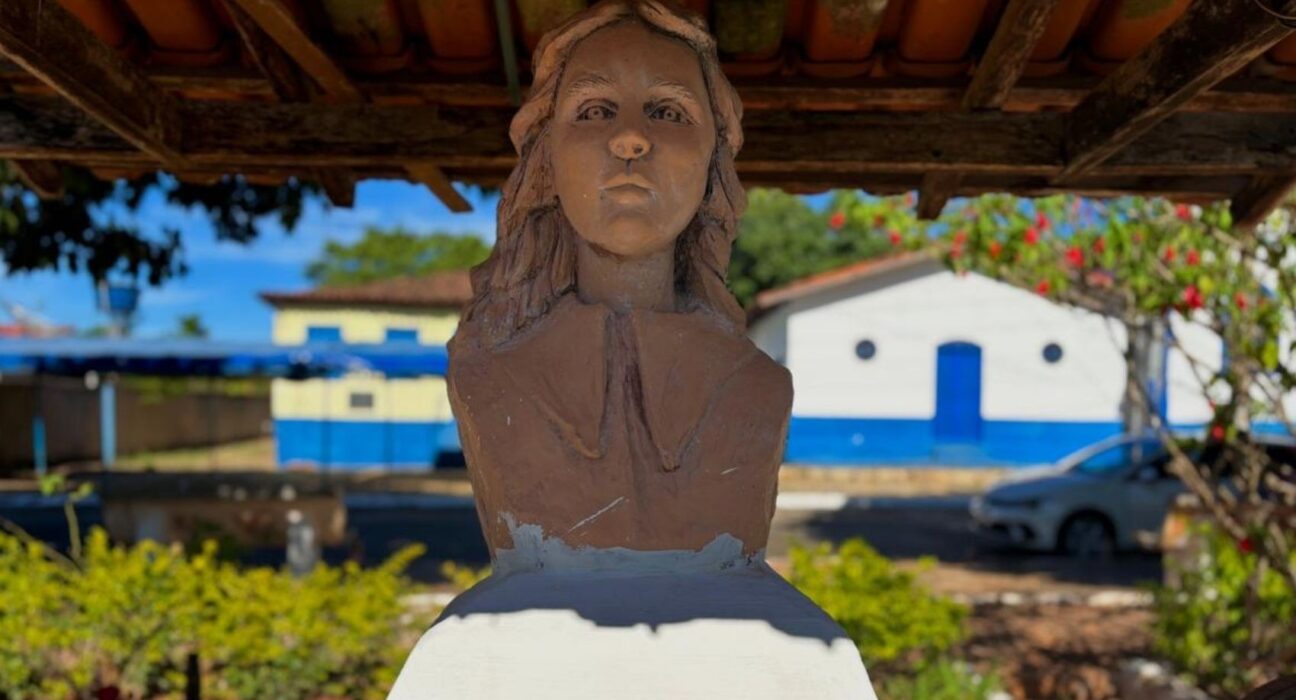Once upon a time, in the mystical lands of Goiás, there lived a woman whose name echoed through the ages – Benedita Cipriano Gomes, known to many as Santa Dica de Goiás. Her story weaves a tapestry of healing the sick, partaking in political revolutions, and founding a village called Lagolândia, nestled about 40 km from Pirenópolis. As the legacy of Santa Dica reached its 120th year in 2025, her followers and descendants strive to ensure that her remarkable tale endures.
Born on April 13, 1905, at the Mozondó farm, the infant who would become a legendary figure faced a tumultuous beginning. Considered dead at birth – a misconception that recurred three more times due to what modern medicine now understands as catalepsy – her life was marked by extraordinary events. Over the years, her remarkable deeds were immortalized in documentaries, films, and books, one of which was penned by the historian and writer Waldetes Aparecida Rezende.
Upon relocating to Lagolândia four decades ago, Waldetes encountered a treasure trove of narratives that illuminated the existence of a mystical woman. The lore surrounding Santa Dica spoke of miraculous occurrences, such as her revival 24 hours after birth, a phenomenon witnessed by her grieving family as they prepared to bury her tiny body. Devout followers of Saint Benedict, her parents named her Benedita in honor of the saint.
Waldetes, whose mother-in-law was a close friend of Dica and father-in-law her chauffeur, became devoted followers themselves. Driven by a desire to uncover the truth behind the woman renowned for healing the sick, Waldetes pursued a history degree. Her quest led to the publication of the book “Santa Dica: History and Enchantments,” shedding light on the awe-inspiring feats of Dica and her significance in the community.
In Lagolândia, Maria das Dores Camargo, a 61-year-old artisan, recalled the indomitable spirit of Dona Dica, whom she knew through Waldetes’ accounts. Describing her as a resilient and nurturing soul who welcomed outsiders with food, prayer, and blessings, Maria’s reminiscences painted a portrait of a compassionate community leader.
Though never self-proclaimed, Santa Dica became synonymous with healing and devotion. Initially met with skepticism, her title of ‘saint’ was a label thrust upon her by newspapers skeptical of her purported abilities to converse with angels and spiritual guides. Despite the moniker, Dica never embraced the designation herself, nor did her followers. The nickname was often used pejoratively, especially within the state of Goiás.
Santa Dica’s healing journey began in childhood, with documented instances of her engaging in miraculous acts from a tender age. Revered as the ‘Angel Whisperer,’ she was often spotted conversing with invisible beings and performing healing rituals through touch and sacred gestures. Her reputation as a miraculous healer spread, attracting the attention of local cattlemen.
In 1923, Dica initiated ‘councils,’ gatherings held at her healing abode or followers’ homes as the burgeoning community flourished. During these sessions, Dica would purify herself, lie down in a trance-like state, and channel spiritual guides whose voices emanated from her without physical movement, captivating her followers with divine messages.
Maria Camargo shared a personal anecdote of familial healing attributed to Dona Dica’s intervention, illustrating the profound impact of her healing touch on the lives of those in need. This act of compassion and miraculous recovery became woven into the fabric of Lagolândia’s folklore, perpetuating Dica’s mythical status.
In 1925, Santa Dica was embroiled in the passage of the Prestes Column through Goiás, a pivotal political-military movement that tested her relationship with the government. Despite being expelled and instructed to send her followers away, Dica’s prophecies of impending violence during the ‘Fire Day’ massacre highlighted her spiritual foresight. The ensuing chaos saw her followers fleeing for safety, guided by the belief in angelic protection.
Captured and falsely reported as missing, Dica’s resilience in the face of adversity defied conventional explanation. Accounts of bullets harmlessly bouncing off her, likened to grains of corn, and her subsequent arrest and brief incarceration underscored her unwavering commitment to her cause. Despite the persecution, Dica’s influence continued to grow, culminating in her pivotal role in the 1932 Revolution and subsequent global recognition.
Amidst political upheaval and societal transformation, Dica’s visionary leadership paved the way for progressive change, empowering women and advocating for community welfare. Her legacy lives on in Lagolândia, a testament to her enduring impact on the region’s cultural, social, and educational landscape.
In Lagolândia, Brigitt Cipriano, Dica’s niece, reminisced about her revolutionary aunt, who defied societal norms and championed women’s rights in an era when such notions were radical. Brigitt highlighted Dica’s trailblazing spirit, emphasizing her role as a beacon of empowerment for generations of Lagolândia’s female leaders.
Dica’s visionary governance and commitment to communal harmony led to the establishment of Lagolândia as a distinct district in 1963, a testament to her enduring legacy. Her advocacy for education, equitable land distribution, and cultural celebrations shaped the ethos of the village, fostering a sense of unity and prosperity among its residents.
Today, the legacy of Santa Dica endures through the Santa Dica Institute, spearheaded by Lucília Amaral, dedicated to preserving her memory and honoring her contributions to society. Despite resistance from certain quarters, Lagolândia stands as a living testament to Dica’s transformative influence, a testament to her courage, compassion, and unwavering commitment to social justice.
As visitors flock to her final resting place beneath the sprawling branches of a gameleira tree, the spirit of Santa Dica lingers, a guardian angel watching over her beloved Lagolândia. In a world often resistant to change, Dica’s story serves as a poignant reminder of the enduring power of compassion, resilience, and visionary leadership in shaping communities and inspiring generations to come.

